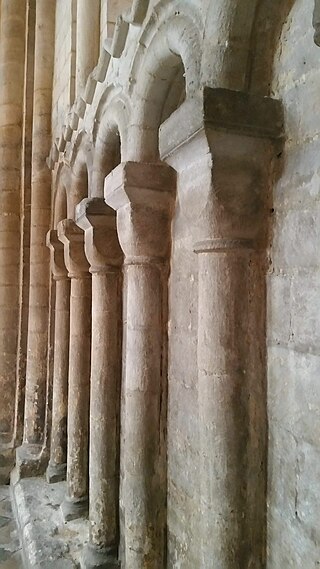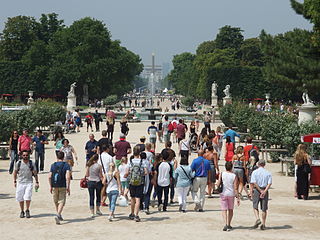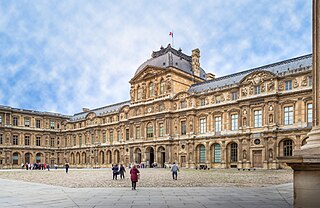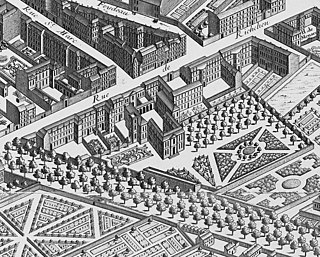List of currently accessible passages
The following table lists the covered passages that still exist and remain accessible to the public.
The covered passages of Paris (French : Passages couverts de Paris) are an early form of shopping arcade built in Paris, France, primarily during the first half of the 19th century. By 1867, there were approximately 183 [1] covered passages in Paris but many were demolished during Haussmann's renovation of Paris. Only 25 survived into the 21st century, all but one are in the arrondissements (municipal districts) on the Right Bank of the Seine.
The common characteristics of the covered passages is that they link at least two streets, have glass ceilings and are: pedestrianised; artificially illuminated at night (initially with gas lamps); privately owned; highly ornamented and decorated; lined with small shops on the ground floor. The passages’ upper floors usually had apartments. [2] Originally, to keep the passages clean, each would have at the entrance an artiste de décrottage (a ‘shoe cleaning artist’).
Alfred de Musset frequented the Galerie Vérot-Dodat when visiting a famous actress. [2]
Eugène-Francois Vidocq, the father of criminology and of the French police system, lived in the Galerie Vivienne in 1840. [2]
As a child, Louis-Ferdinand Céline lived in the Passage Choiseul. [2]
The passages were the subject of Walter Benjamin's incomplete magnum-opus Passagenwerk (Arcades Project) which was posthumously published.
The following table lists the covered passages that still exist and remain accessible to the public.
street by street, house by house

The Avenue des Champs-Élysées is an avenue in the 8th arrondissement of Paris, France, 1.9 kilometres (1.2 mi) long and 70 metres (230 ft) wide, running between the Place de la Concorde in the east and the Place Charles de Gaulle in the west, where the Arc de Triomphe is located. It is known for its theatres, cafés, and luxury shops, as the finish of the Tour de France cycling race, as well as for its annual Bastille Day military parade. The name is French for the Elysian Fields, the place for dead heroes in Greek mythology. It has been described as the "most beautiful avenue in the whole world".

An arcade is a succession of contiguous arches, with each arch supported by a colonnade of columns or piers. Exterior arcades are designed to provide a sheltered walkway for pedestrians; they include many loggias, but here arches are not an essential element. An arcade may feature arches on both sides of the walkway. Alternatively, a blind arcade superimposes arcading against a solid wall.

The 2nd arrondissement of Paris is one of the 20 arrondissements of the capital city of France. In spoken French, this arrondissement is colloquially referred to as deuxième. It is governed locally together with the 1st, 3rd and 4th arrondissement, with which it forms the 1st sector of Paris.

The Tuileries Garden is a public garden between the Louvre and the Place de la Concorde in the 1st arrondissement of Paris, France. Created by Catherine de' Medici as the garden of the Tuileries Palace in 1564, it was opened to the public in 1667 and became a public park after the French Revolution. Since the 19th century, it has been a place for Parisians to celebrate, meet, stroll and relax.

The Jardin des plantes, also known as the Jardin des plantes de Paris when distinguished from other jardins des plantes in other cities, is the main botanical garden in France. The term Jardin des plantes is the official name in the present day, but it is in fact an elliptical form of Jardin royal des plantes médicinales, which is related to the original purpose of the garden back in the 17th century.

The Palais-Royal is a former French royal palace located on Rue Saint-Honoré in the 1st arrondissement of Paris. The screened entrance court faces the Place du Palais-Royal, opposite the Louvre. Originally called the Palais-Cardinal, it was built for Cardinal Richelieu from about 1633 to 1639 by architect Jacques Lemercier. Richelieu bequeathed it to Louis XIII, before Louis XIV gave it to his younger brother, the Duke of Orléans. As the succeeding Dukes of Orléans made such extensive alterations over the years, almost nothing remains of Lemercier's original design.

The Rue du Faubourg Saint-Honoré is a street located in the 8th arrondissement of Paris, France. Relatively narrow and nondescript, especially in comparison to the nearby Avenue des Champs-Élysées, it is cited as being one of the most luxurious and fashionable streets in the world thanks to the presence of virtually every major global fashion house, the Élysée Palace, the Hôtel de Pontalba, the Embassy of Canada, the Embassy of the United Kingdom, as well as numerous art galleries.

The Royal Saint-Hubert Galleries is an ensemble of three glazed shopping arcades in central Brussels, Belgium. It consists of the King's Gallery, the Queen's Gallery and the Princes' Gallery.

The Passage des Panoramas is the oldest of the covered passages of Paris, France located in the 2nd arrondissement between the Montmartre boulevard to the North and Saint-Marc street to the south. It is one of the earliest venues of the Parisian philatelic trade, and it was one of the first covered commercial passageways in Europe. Bazaars and souks in the Orient had roofed commercial passageways centuries earlier but the Passage de Panoramas innovated in having glazed roofing and, later on, in 1817, gas lights for illumination. It was an ancestor of the city gallerias of the 19th century and the covered suburban and city shopping malls of the 20th century.

The Louvre Palace, often referred to simply as the Louvre, is an iconic French palace located on the Right Bank of the Seine in Paris, occupying a vast expanse of land between the Tuileries Gardens and the church of Saint-Germain l'Auxerrois. Originally a defensive castle, it has served numerous government-related functions in the past, including intermittently as a royal residence between the 14th and 18th centuries. It is now mostly used by the Louvre Museum, which first opened there in 1793.

The Bortier Gallery is a glazed shopping arcade in Brussels, Belgium. It was designed by Jean-Pierre Cluysenaer in 1847, in a neo-Renaissance style, and opened in the following year. As well as being one of the first European shopping arcades, it is a fine example of the joint use of cast iron and glass.

The Gran Hotel Manzana Kempinski La Habana is a luxury hotel in Havana, Cuba. It is located in the historic Manzana de Gómez building, an early-20th-century building that was Cuba's first shopping mall. The Kempinski Hotel chain, belongs to the oldest hotel groups in Europe, Kempinski Aktiengesellschaft.

The Passage de l'Argue is a covered arcade in the Bellecour quarter, in the 2nd arrondissement of Lyon, which connects the rue de la République to the rue Édouard-Herriot and the rue de Brest. It is continued across rue de Brest by the Petit Passage de l'Argue, which was part of the main passage until the road was constructed. The Passage de l'Argue is one of the oldest arcades in the French provinces, built at the same period and on the same model as Parisian arcades. Home to many luxury retailers, it plays a significant role in the trade of the Presqu'île.

The Galerie Véro-Dodat is one of the covered passages of Paris. It is located in the 1st arrondissement, connecting the Rue de Jean-Jacques Rousseau and Rue de Croix-des-Petits-Champs. It was built in 1826.

The Galerie Vivienne is one of the covered passages of Paris, France, located in the 2nd arrondissement. It is 176 metres (577 ft) long and 3 metres (9.8 ft) wide. The gallery has been registered as a historical monument since 7 July 1974.

Passage Choiseul is one of the covered passages of Paris, France located in the 2nd arrondissement. It is the continuation of Rue de Choiseul.

The Passage Jouffroy is a covered passages of Paris, France, located in the 9th arrondissement. It runs between the Boulevard Montmartre to the south and the Rue de la Grange-Batelière to the north.

Paris today has more than 421 municipal parks and gardens, covering more than three thousand hectares and containing more than 250,000 trees. Two of Paris's oldest and most famous gardens are the Tuileries Garden, created in 1564 for the Tuileries Palace, and redone by André Le Nôtre in 1664; and the Luxembourg Garden, belonging to a château built for Marie de' Medici in 1612, which today houses the French Senate. The Jardin des Plantes was the first botanical garden in Paris, created in 1626 by Louis XIII's doctor Guy de La Brosse for the cultivation of medicinal plants. Between 1853 and 1870, the Emperor Napoleon III and the city's first director of parks and gardens, Jean-Charles Adolphe Alphand, created the Bois de Boulogne, the Bois de Vincennes, Parc Montsouris and the Parc des Buttes Chaumont, located at the four points of the compass around the city, as well as many smaller parks, squares and gardens in the neighborhoods of the city. One hundred sixty-six new parks have been created since 1977, most notably the Parc de la Villette (1987–1991) and Parc André Citroën (1992).

The Hôtel de Crozat, later the Hôtel de Choiseul, was a Parisian hôtel particulier, constructed in 1704 to the designs of the French architect Jean-Sylvain Cartaud for the rich banker and art collector Pierre Crozat. It was located on the west side of the rue de Richelieu, south of its intersection with the Grand Boulevard. The Duke of Choiseul acquired the hôtel in 1750. It was demolished in 1780, the property subdivided, and a theatre, the Salle Favart, constructed in the former garden.

Rue des Petits-Champs is a street which runs through the 1st and 2nd arrondissement of Paris, France.